Payroll outsourcing in South Africa: What to look for in a trusted partner
Payroll is one of the most crucial yet challenging aspects of running a business in South Africa. Between staying compliant with complex labour laws, meeting strict SARS requirements and ensuring timely, accurate employee payments, many companies find themselves overwhelmed.
Add the pressure of managing sensitive data and evolving workforce needs, and it’s clear why more businesses are turning to payroll services in South Africa. This article explores what South African companies should look for in a trusted payroll outsourcing partner, one who not only understands the local landscape but also offers scalable, secure and technologically advanced solutions.
Why South African companies are turning to Payroll Outsourcing
Managing payroll is a time-consuming and resource-intensive process that extends far beyond simply paying employees. It encompasses:
- Precise calculation of gross and net wages, tax withholdings, and statutory deductions
- Full compliance with the South African Revenue Service (SARS) and the Department of Labour
- Accurate and timely submission of EMP201 and EMP501 returns
- Administration of statutory contributions like UIF (Unemployment Insurance Fund), SDL (Skills Development Levy), and PAYE (Pay-As-You-Earn)
- Management of employee benefits, bonuses, pensions and leave entitlements
As regulatory frameworks grow increasingly complex, the margin for error narrows significantly. Mistakes in payroll can result in heavy penalties, damaged employee trust and even reputational risks. For many businesses, particularly small to medium enterprises (SMEs), the internal resources needed to manage payroll correctly are simply not available.
By outsourcing payroll to a qualified provider, companies can redirect their focus to core activities, improve operational efficiency and ensure compliance with local laws and industry best practices. The benefits are clear: lower overheads, minimised risk and enhanced scalability.
Key traits of a reliable payroll outsourcing partner
Choosing the right payroll provider is pivotal. Below are the most critical factors to consider:
1. Local expertise and regulatory knowledge
Payroll in South Africa is governed by a variety of complex laws and regulatory frameworks. An ideal payroll partner must have a comprehensive understanding of national labour laws such as the Basic Conditions of Employment Act (BCEA), the Labour Relations Act (LRA), and relevant SARS regulations. This expertise ensures that payroll calculations align with legal standards, employee entitlements are properly managed and employer responsibilities are fulfilled. Additionally, the partner should actively monitor legislative changes to help businesses remain compliant and avoid penalties.
2. Advanced technology and automation
Modern payroll management relies heavily on digital solutions. A reputable outsourcing partner should offer advanced, cloud-based platforms that enable employers to access payroll data from any device. Automation capabilities, such as real-time payslip generation, auto-calculation of deductions, and digital tax submissions streamline the entire process, reduce the likelihood of human error, and allow for faster processing. Look for providers whose systems also integrate seamlessly with accounting and HR software to create a unified operational environment.
3. Data security and confidentiality
Handling payroll means managing highly sensitive information, including employee identification numbers, salaries, and banking details. Therefore, data protection is non-negotiable. The payroll provider should implement end-to-end encryption, secure data storage protocols, and role-based access controls to prevent unauthorized access. They must also comply with the Protection of Personal Information Act (POPIA), ensuring that all data is handled legally and ethically. A strong security infrastructure reflects the provider’s commitment to safeguarding your business and your employees.
4. Customisation and scalability
Each business has unique payroll requirements depending on industry, size and workforce structure. An effective payroll partner offers flexible services tailored to your specific needs, whether it’s handling hourly wages, shift differentials, or multi-location teams. Scalability is equally important. The system should be capable of growing alongside your business, accommodating new hires, departmental expansions and changing business models without disruption. A tailored approach ensures your payroll system remains relevant and efficient as you evolve.
5. Comprehensive reporting and transparency
Accurate reporting is essential for financial planning, internal audits, and compliance. Your payroll partner should deliver clear, itemised payslips, as well as comprehensive reports that break down salary costs, tax obligations, and employee benefits. These reports should be customizable to meet specific business needs and compatible with accounting systems. Real-time access to this data empowers businesses to make informed decisions and maintain full visibility over payroll operations.
6. Dedicated support and responsiveness
Timeliness is crucial in payroll. Delays or miscommunications can lead to late salary payments, employee dissatisfaction, or fines. A dependable provider will offer dedicated client support with a responsive team available to answer questions, resolve issues, and guide clients through regulatory challenges. Access to knowledgeable, local support ensures that issues are addressed swiftly and professionally, maintaining payroll continuity and peace of mind.
Red flags to avoid when choosing a payroll provider
Not all payroll providers are created equal. Watch out for these warning signs that could spell trouble down the road:
Lack of transparency in pricing and service scope
If a provider is vague about their fees or what’s included in their service package, you may end up facing hidden costs or insufficient service delivery. Always ask for a detailed breakdown of pricing and inclusions.
Limited customer support or unresponsiveness
In payroll, timing is everything. A delay in communication or lack of support during critical moments (e.g., tax season or pay run deadlines) can cause serious disruptions. Ensure the provider offers real-time, local support channels and a designated contact person.
No clear data protection policies
A reputable provider must demonstrate how they safeguard sensitive employee and financial data. If they can’t explain their encryption methods, backup systems, or compliance with POPIA, it’s a major red flag.
Inadequate knowledge of local laws and regulations
Payroll providers must stay current with South African tax law and labour policies. An uninformed provider can expose your business to penalties or legal risks. Test their expertise by asking specific questions about recent legislation changes.
Before committing to any payroll service, conduct thorough due diligence. Request client references, ask about their audit history, and confirm their certifications or industry affiliations. A trustworthy provider will be transparent, responsive, and fully aligned with South African compliance standards.
Partner with MASA for Seamless Payroll Outsourcing
In today’s demanding economic environment, businesses need every advantage to stay competitive. Efficient, accurate, and compliant payroll processing is not just a back-office task. It’s a strategic imperative. By choosing the right payroll outsourcing partner, you can unlock new levels of operational efficiency, reduce compliance risks and ensure your employees are paid on time, every time.
MASA offers more than just payroll services, we deliver peace of mind. With our deep understanding of South African labour regulations, advanced technology platforms, and client-centric approach, we tailor our payroll solutions to meet the unique needs of your business. Whether you’re a growing SME or a large enterprise, we provide the flexibility, accuracy, and support you need to scale confidently.
Let us handle the complexity of payroll while you focus on driving growth. Learn more about our payroll outsourcing services and discover how MASA can be your trusted partner in business success.











